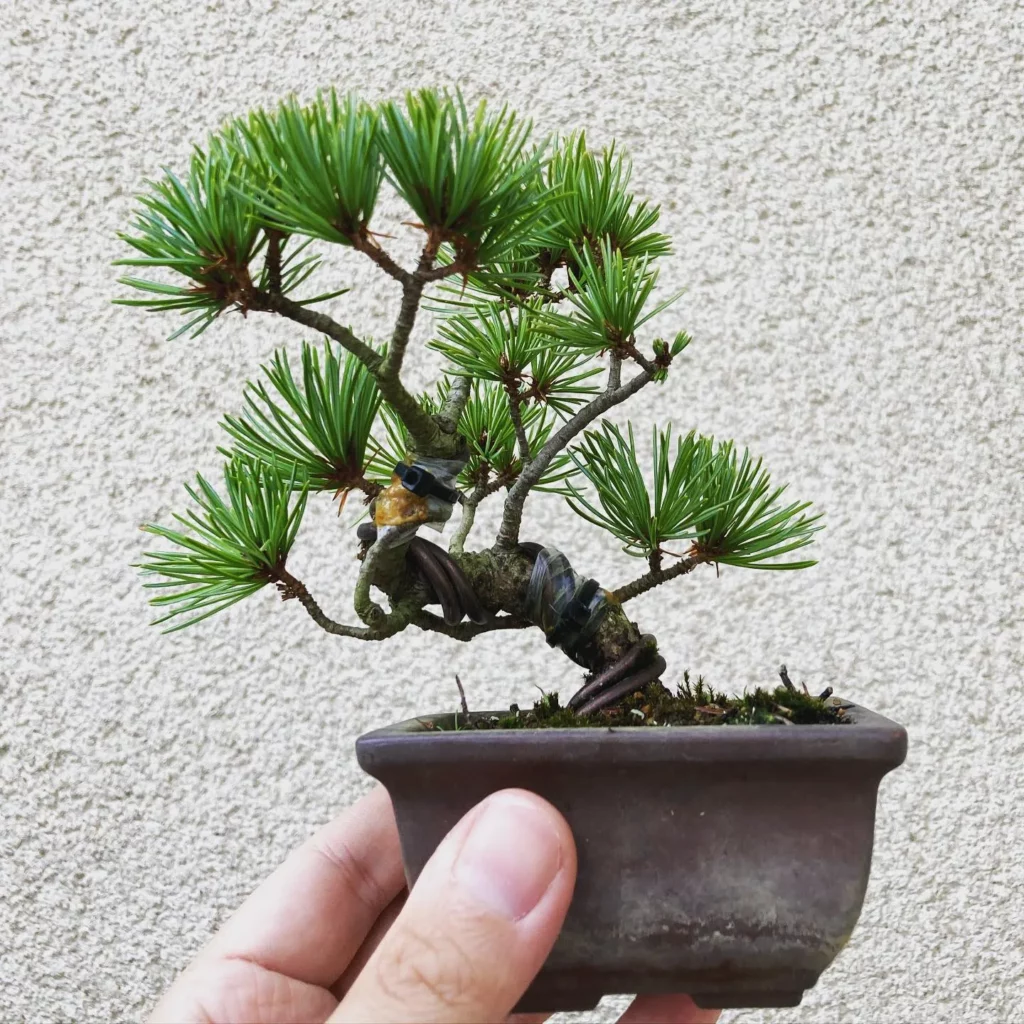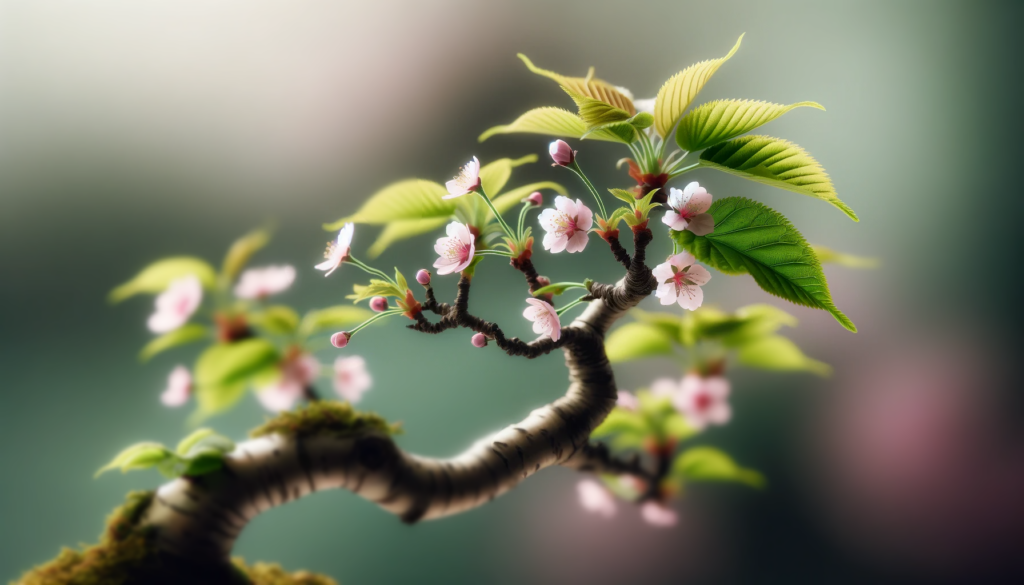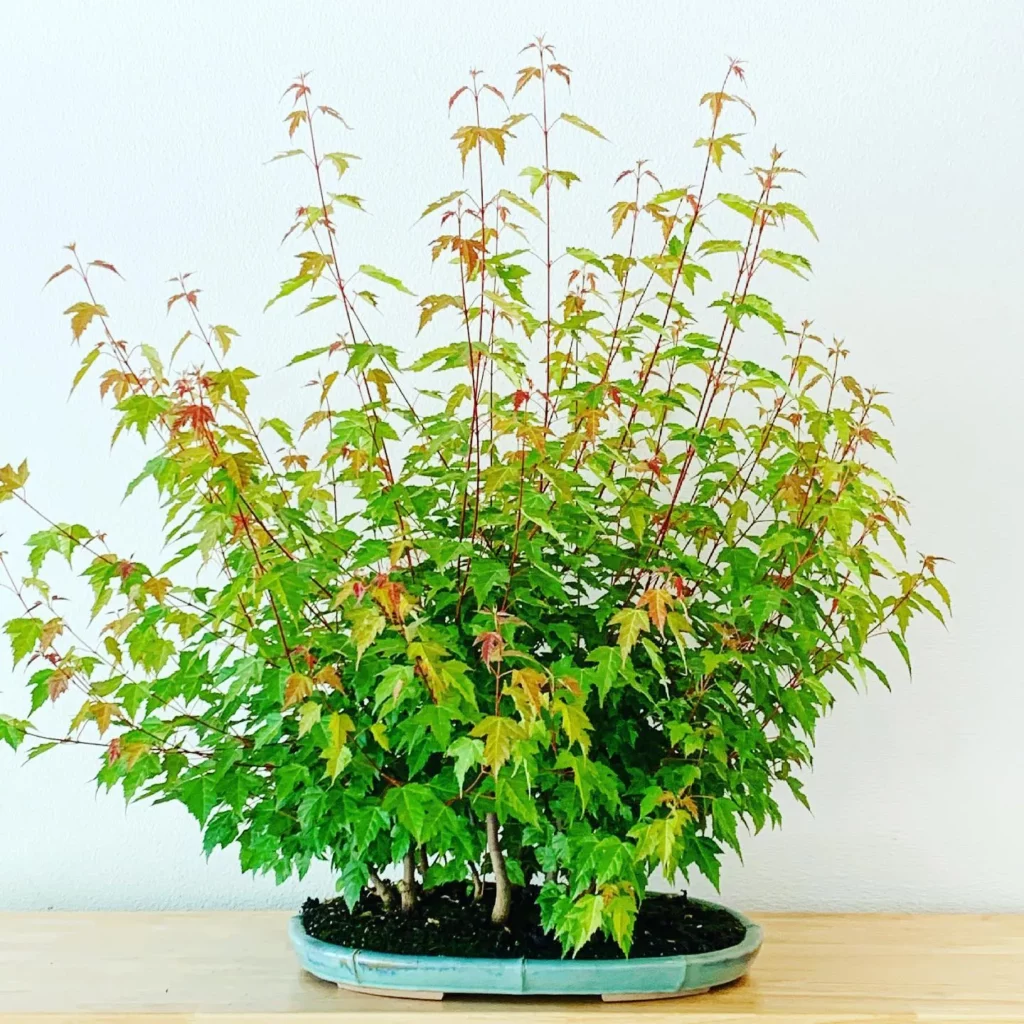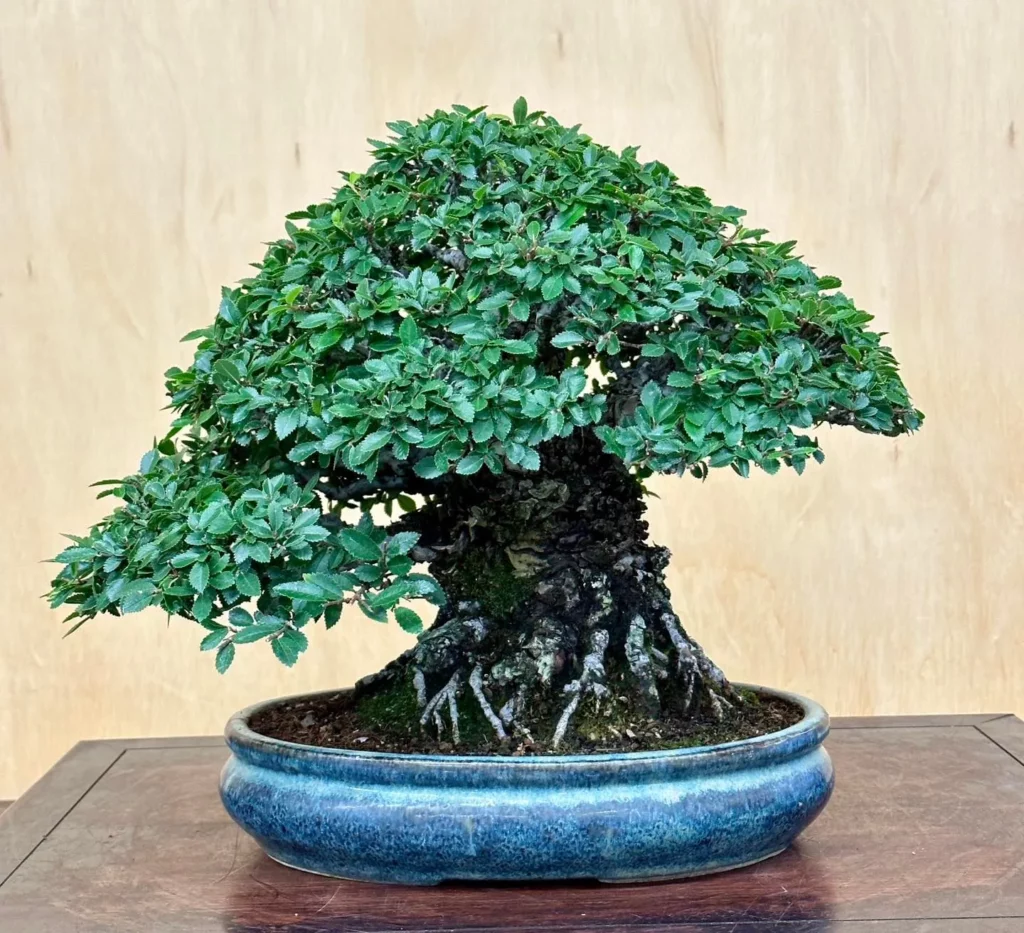Welcome to the world of bonsai trees, where every detail matters in creating a captivating display. One key element that can significantly enhance your bonsai presentation is the choice of a bonsai display table or stand. These functional and aesthetic pieces not only elevate your bonsai tree off the ground but also provide stability and improve its overall look.
When it comes to bonsai display tables and stands, the options are limitless. From different sizes, shapes, materials, to designs, you have the freedom to personalize your showcase. However, it’s important to consider factors like size, material type, and aesthetics to find the perfect match for your bonsai tree.
Investing time in researching different options can help you find a display table or stand that not only complements your bonsai tree but also elevates its beauty to new heights. In this article, we will explore the importance of bonsai display tables and stands, the different types available, the materials used in their construction, and the factors to consider when choosing the right one. Let’s dive in and take your bonsai presentation to the next level!
The Importance of Bonsai Display Tables and Stands

Bonsai display tables and stands play a crucial role in presenting bonsai trees in an aesthetically pleasing manner. They elevate the tree off the ground for better visibility, provide stability, and enhance its overall look. The purpose of bonsai stands is to showcase the artistry and craftsmanship of the bonsai tree, making it the focal point of attention.
When displaying a bonsai tree, the role of display tables in bonsai art cannot be overstated. These tables create a platform that allows you to showcase the tree’s unique features and beauty. They provide a foundation for the tree to stand on, ensuring that it is securely positioned and protected.
One of the key benefits of bonsai display tables is their ability to enhance the overall visual impact of a bonsai tree. By elevating the tree, you create a sense of depth and dimension in the display. This allows viewers to appreciate the intricate details of the tree from different angles, adding depth and visual interest to the overall composition.
Another important aspect of bonsai display tables is their ability to complement the aesthetics of the bonsai tree. When choosing a display table or stand, it is essential to consider the size, material type, weight capacity, and overall design. The table or stand should harmonize with the tree’s shape, color, and texture, creating a cohesive and visually appealing display.
No products found.
The purpose of bonsai stands goes beyond mere presentation. They also serve a functional role in the care and maintenance of the bonsai tree. By elevating the tree, you provide better airflow and sunlight exposure, which are crucial for its growth and health. Additionally, the elevated position prevents the tree from being easily knocked over or damaged.
Types of Bonsai Display Tables and Stands

When it comes to showcasing your bonsai trees, there are various types of display tables and stands to choose from. Each type offers its own unique aesthetic and allows for personalization to suit your preferences. Let’s explore the different options available:
Traditional Japanese-style Display Tables
Traditional Japanese-style display tables are crafted from wood and feature simple yet elegant designs. These tables beautifully complement the natural beauty of bonsai trees, giving them a touch of authenticity and grace.
Modern Style Display Stands
For a contemporary look, modern style display stands are ideal. They are often made from sleek materials like metal or glass and feature minimalistic designs with clean lines. These stands add a touch of modern sophistication to your bonsai showcase.
DIY Display Tables
If you’re feeling creative, you can try making your own display tables using repurposed items. DIY display tables allow for customization and can be a fun project to personalize your bonsai presentation. Let your imagination run wild as you bring your unique vision to life.
Innovative Display Stands
Looking to make a statement? Innovative display stands use unconventional materials to create a truly one-of-a-kind presentation. Imagine showcasing your bonsai on an old typewriter or musical instrument. These stand options are sure to spark conversations and captivate viewers with their creativity.
Materials Used in Making Bonsai Display Tables and Stands

Bonsai display tables and stands are crafted from a variety of materials, each offering its own unique characteristics and charm. The choice of material can significantly impact the overall aesthetics and durability of the display table or stand.
Wood
Wood is the most commonly used material in creating bonsai display tables and stands. It is favored for its natural look and versatility, allowing for a wide range of designs. Different types of wood, such as pine, redwood, cedar, and maple, offer distinct characteristics and visual appeal. Wood display tables and stands blend harmoniously with the organic beauty of bonsai trees, creating a warm and inviting display.
Metal
Metal display tables and stands bring a modern touch to bonsai showcases. They offer durability and strength, ensuring the stability of the bonsai tree. Common metal options include stainless steel and wrought iron. Metal stands can be sleek and minimalist, lending a contemporary aesthetic to the display. However, it is important to note that metal stands may require regular maintenance to prevent the onset of rust.
Stone
Stone display tables and stands provide a sturdy base for bonsai trees. They are often used in outdoor gardens or larger displays. Stone materials, such as granite or marble, offer a natural and earthy feel, seamlessly blending with the surroundings. Stone stands can anchor the bonsai tree and add a sense of permanence to the overall presentation. The weight and stability of stone make it a reliable choice for showcasing your bonsai tree.
Glass
Glass display cases offer a unique and elegant way to showcase bonsai trees. These transparent enclosures provide protection while allowing unobstructed views of the tree’s intricate details. Glass display tables and stands can create a sense of craftsmanship and delicacy, emphasizing the artistry of the bonsai tree. They are particularly suitable for indoor displays, creating a captivating centerpiece that draws attention.
Bamboo
Bamboo is a sustainable and eco-friendly material that complements the natural look of bonsai trees. It adds a touch of simplicity and elegance to the display. Bamboo display tables and stands are often handcrafted, showcasing the artisanal nature of bonsai cultivation. The light and durable properties of bamboo make it an excellent choice for both indoor and outdoor bonsai showcases.
Factors to Consider When Choosing a Bonsai Display Table or Stand

When selecting a bonsai display table or stand, there are several key factors that you should take into consideration to ensure the best presentation of your bonsai tree.
- Size of the tree: It is important to choose a display table or stand that is proportionate to the size of your bonsai tree. A small tree may get lost on a large table, while a large tree may overwhelm a small table.
- Type of tree: Different types of bonsai trees have their own unique characteristics and styles. Consider the specific needs and aesthetics of your tree when selecting a display option. For example, a traditional Japanese-style display table might be more suitable for a classic pine bonsai, while a modern-style metal stand could complement a more contemporary tree.
- Height and weight of the tree: The height and weight of your bonsai tree will determine the stability requirements of the display table or stand. A taller tree may require a more robust and sturdy stand, while a heavier tree may need additional support to prevent tipping or toppling.
- Aesthetics: The aesthetics of the display table or stand should complement the shape, color, and texture of your bonsai tree. Consider the overall look you want to achieve, whether it’s a natural and earthy feel or a modern and sleek appearance. Choose a display option that enhances the beauty of your bonsai and creates a visually appealing showcase.
The Impact of Choosing the Right Bonsai Display Stand
Choosing the right bonsai display stand can have a powerful impact on the overall aesthetics and presentation of your bonsai tree. When you select a well-made and visually appealing stand, it enhances the beauty of the tree and draws attention to its exceptional qualities. A carefully chosen display stand can turn your bonsai into a captivating work of art that showcases the craftsmanship and artistry behind it.
One of the key benefits of choosing the right display stand is the enhanced aesthetics it provides. The stand serves as the foundation for your bonsai, elevating it off the ground and giving it a focal point. By selecting a stand that complements the style and form of your bonsai, you can create a harmonious display that enhances the overall visual appeal. Whether you opt for a traditional wooden stand that adds a touch of elegance or a modern metal stand that brings a contemporary flair, the right choice can elevate the beauty of your bonsai to new heights.
In addition to enhancing aesthetics, the right display stand also plays an integral role in providing stability for your bonsai tree. A well-designed stand ensures that your bonsai remains secure and upright, reducing the risk of it toppling over or getting damaged. Stability is particularly crucial for larger or heavier bonsai trees, as it prevents them from tipping and ensures their long-term health and longevity. By investing in a sturdy and reliable display stand, you can rest assured that your bonsai is securely showcased.
Ultimately, choosing the right bonsai display stand is about creating a captivating and visually appealing display that honors the unique beauty of your bonsai tree. It is a deliberate decision that considers the aesthetics, stability, and overall impact of your display. So take the time to explore different options, consider the style and size of your bonsai, and select a display stand that enhances its natural charm and elevates it to a true work of art.
Arranging the Bonsai on the Display Stand
The arrangement of your bonsai tree on the display stand is a critical aspect of creating an aesthetically pleasing display. By utilizing effective positioning techniques, you can enhance the overall beauty and visual impact of your bonsai showcase.
Here are some key factors to consider when arranging your bonsai tree on the display stand:
1. Positioning Techniques
- Asymmetrical arrangements: Creating a sense of balance and movement, asymmetrical arrangements can give your display a dynamic and visually interesting look.
- Triangular or pyramidal shapes: Arranging the tree and other elements in a triangular or pyramidal shape can create a sense of harmony and cohesion.
2. Natural Growth Patterns
Consider the natural growth pattern of your bonsai tree and position its branches accordingly. This will help showcase the tree’s unique structure and create a more authentic and natural display.
3. Creating Unity with Companion Plants
Introducing companion plants and rocks can add depth, texture, and contrast to your bonsai display. Choose plants that complement your bonsai tree in terms of color and texture, creating a cohesive and visually appealing arrangement.
4. Incorporating Negative Space
Allowing for negative space in your display is crucial. Negative space refers to the empty spaces around the bonsai tree and other elements, which creates a visually pleasing balance and allows viewers to appreciate the beauty of each component in the display.
Choosing the Right Accent Plant
Accent plants play a vital role in enhancing the overall appearance of your bonsai display while adding depth and texture. The right accent plant can bring harmony and balance to your arrangement, creating a visually appealing bonsai showcase. When selecting an accent plant, it is important to consider its compatibility with the bonsai tree in terms of color and texture.
- Choose an accent plant that complements the colors of your bonsai tree. Opt for plants with leaves or flowers that contrast or harmonize with the hues of your bonsai. This contrast can create visual interest and draw attention to the bonsai tree as the focal point of the display.
- Consider the texture of the accent plant in relation to the bonsai tree. Combining plants with different leaf shapes and textures can add visual richness and complexity to the display. For example, pairing a bonsai tree with delicate ferns can create a contrast of textures that is visually captivating.
- Use small accent plants sparingly to avoid overpowering the main attraction, which is the bonsai tree itself. Too many accent plants can distract viewers from appreciating the beauty and detail of the bonsai tree. Select a few carefully chosen accent plants that complement the tree without overshadowing it.
Customization Possibilities for Bonsai Display Stands
When it comes to showcasing your bonsai trees, customization options for display stands can help you create a truly unique and personalized look. These customization features allow you to tailor the stand to your specific needs and preferences, ensuring a perfect fit for your bonsai showcase.
No products found.
Interchangeable Parts
Some bonsai display stands offer interchangeable parts, allowing you to adjust the stand to accommodate different pot or tree sizes. This flexibility ensures that your bonsai tree is properly supported and displayed, enhancing its overall appearance. With interchangeable parts, you can easily adapt the display stand to suit the changing needs of your bonsai collection.
Adjustable Features
Adjustable features in bonsai display stands provide you with the ability to customize the placement of your trees. Features such as adjustable height or depth allow you to create optimal arrangements and highlight specific aspects of your bonsai. By adjusting these features, you can achieve the desired visual impact and showcase the unique characteristics of each bonsai tree.
Multi-Level Stands
For those with multiple bonsai trees, multi-level stands offer a visually stunning way to showcase your collection. These stands feature multiple tiers or levels, allowing you to display your bonsai trees at different heights. This creates depth and adds visual interest to your bonsai showcase, making it a captivating focal point in any space.
Where to Find Bonsai Display Stands
Are you in search of the perfect display stand to showcase your beautiful bonsai tree? Look no further! There are several convenient options available to help you find the ideal display stand that suits your preferences.
1. Local Nurseries: Pay a visit to your local nurseries, where you can find a variety of bonsai display stands. Nurseries often offer a range of options to choose from, allowing you to select the perfect stand that complements the aesthetics of your bonsai tree.
2. Online Stores: Explore the vast selection of bonsai display stands available through various online stores. With just a few clicks, you can browse through different designs, materials, and styles, all from the comfort of your own home.
3. Specialty Shops: If you’re looking for a unique and intricate display stand, specialty shops that cater specifically to bonsai enthusiasts are your best bet. These shops offer a wide variety of designs and materials, ensuring you’ll find a stand that truly stands out.
4. DIY Options: Are you someone who enjoys getting creative? Consider building your own bonsai display stand through DIY options. Online resources provide step-by-step instructions and inspiration to help you create a personalized stand that perfectly showcases your bonsai tree.
Maintaining Bonsai Display Tables and Stands
Proper maintenance of your bonsai display tables and stands is crucial for ensuring their longevity and preserving their aesthetics. Regular cleaning techniques should be employed to keep the tables and stands free from dust and debris, maintaining their pristine appearance. It is recommended to use a soft cloth or brush to gently remove any accumulated dirt, taking care not to scratch or damage the surfaces.
In addition to cleaning, regular maintenance is necessary to ensure the stability and functionality of your display tables and stands. Regularly inspect the connections and joints for any signs of wear or damage. Loose connections or unstable legs can compromise the safety of your bonsai trees and display. If any issues are detected, it is important to promptly repair or replace the affected parts to prevent further damage and ensure the stability of your display.
Furthermore, protecting your bonsai display tables and stands from environmental factors is essential. Exposing them to direct sunlight or excessive rain can lead to fading, warping, or other forms of damage. Placing your display in a suitable location, away from direct sunlight and protected against rainwater, will help maintain their condition. Additionally, consider using protective coatings or treatments designed for the specific materials of your display to further shield them against potential damage.
By prioritizing the regular cleaning, maintenance, and protection of your bonsai display tables and stands, you can ensure their longevity and preserve their aesthetic appeal. These practices will keep your bonsai showcase looking its best, allowing your beautiful trees to shine and be appreciated for years to come.
After this check out our other articles on:
FAQ
What is the purpose of bonsai display tables and stands?
Bonsai display tables and stands are essential for presenting bonsai trees in an aesthetically pleasing manner. They elevate the tree off the ground for better visibility, provide stability, and enhance its overall look.
What are the different types of bonsai display tables and stands?
There are traditional Japanese-style display tables, modern style display stands, DIY display tables, and innovative display stands made from unique materials.
What materials are used in making bonsai display tables and stands?
Bonsai display tables and stands can be made from wood, metal, stone, glass, or bamboo, each with its own unique characteristics.
What factors should I consider when choosing a bonsai display table or stand?
It is important to consider the size of the tree, the type of tree, the height and weight of the tree, and the overall aesthetics when choosing a bonsai display table or stand.
How does choosing the right bonsai display stand impact the presentation of the bonsai tree?
Choosing the right bonsai display stand significantly enhances the tree’s aesthetics, draws attention to its best qualities, and creates a visually appealing display. It also provides stability and protects the bonsai tree.
What are some techniques for arranging the bonsai on the display stand?
Positioning techniques such as asymmetrical arrangements and triangular or pyramidal shapes can create balance, movement, and harmony. It is important to consider the natural growth pattern of the tree and position its branches accordingly. Companion plants and rocks can be used to create depth, texture, and contrast.
Why is choosing the right accent plant important in bonsai displays?
Accent plants enhance the overall appearance of the bonsai display by adding depth and texture. When choosing an accent plant, it is important to consider its compatibility with the bonsai tree in terms of color and texture.
Are there customization options available for bonsai display stands?
Yes, some bonsai display stands offer customization options such as interchangeable parts, adjustable features, and multi-level stands.
Where can I find bonsai display stands?
Bonsai display stands can be found at local nurseries, online stores, specialty shops, and through DIY options.
How should I maintain bonsai display tables and stands?
Regular maintenance includes cleaning techniques to keep them free from dust and debris, inspecting and repairing any damage, and protecting them from environmental factors such as rain or direct sunlight.




